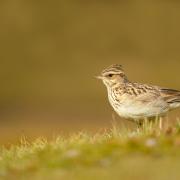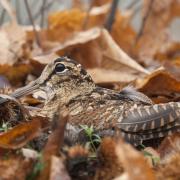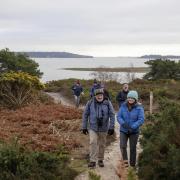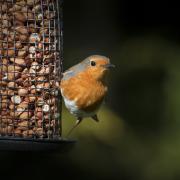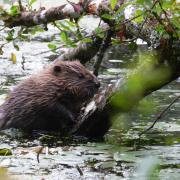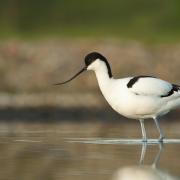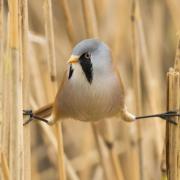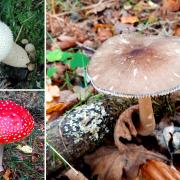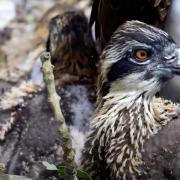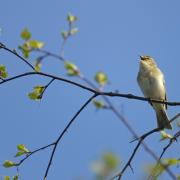Dorset is home to all of Britain's native reptile species. Here, Colin Varndell takes a close (sometimes very close!) look at these often unloved but fascinating animals
Dorset is home to all of Britain's native reptile species. Here, Colin Varndell takes a close (sometimes very close!) look at these often unloved but fascinating animals
Dorset's heathlands are among the rarest habitat types on Earth, supporting a rich diversity of flora and fauna, including all of Britain's native reptile species. Snakes and lizards may not be everyone's cup of tea, but they are beautiful creatures in their own right and lead fascinating lives.
The best time of year to observe reptiles is in early spring when they are starting to warm up. They are cold-blooded animals, so they need to raise their body temperature in order to become active. A reptile does this by basking in a sheltered spot which catches warm sunshine. Find an adder or a lizard on a south-facing bank in a sunny situation in spring and the chances are the animal will be basking in the same place the next day. I remember once finding a melanistic or black adder on Powerstock Common early in March. I was able to take several people to see it on different days over a period of a couple of weeks as it was always in exactly the same spot.
The smooth snake is Britain's rarest native reptile and has its stronghold on the heathlands of East Dorset and the New Forest. The smooth snake gets its name from the unkeeled scales of its body, which are completely flat. This reptile is one of the most difficult wild animals to observe, though, as it rarely basks out in the open like an adder or a grass snake does but rather entwines itself through dense vegetation. The smooth snake is not venomous but it does have a significant bite. It feeds mainly upon lizards, which it catches initially with its fangs. The smooth snake constrains the victim with its coils, swallowing the prey headfirst and very much alive. Not a very nice way to go for a hapless lizard.
The adder is much more common and occurs throughout Dorset. In the west of the county, it can be seen anywhere along the coast. Inland it is mostly associated with heath or scrubby habitats. Some inland haunts where you may encounter adders include Powerstock Common, Fontmell Down or Alner's Gorse. The adder is venomous and will strike at any potential predator if provoked, but this is only in self-defence - unless, of course, you are a mouse. It is capable of killing an average-sized dog but not a human, although in humans the symptoms of an adder bite can be most unpleasant, with sickness and violent vomiting high on the agenda.
Once, I had been looking at adders in a ditch at West Bexington where two adults were entwined together in the sunshine. I could see the possibility of a photograph so I gently slid down into the ditch and began moving slowly towards the snakes. I was lying on the bank and gradually wriggling closer when one of the reptiles became disturbed and slithered off into the background. With the other adder still at rest I moved as close as I dared and began composing and focusing the picture when I was startled by a 'hiss' near my left ear. The snake which had previously moved off had come back around to warn me off and was literally baring its fangs and hissing menacingly no more than an inch from my ear! Cautiously, and with very smooth and gentle movements, I carefully retreated.
Grass snakes can grow to considerable lengths; a female can reach up to 90cm (just under 3ft). This is our largest terrestrial reptile and Dorset's most common snake, which can turn up just about anywhere in the county. Unlike our other reptiles, the grass snake does not give birth to live young but lays a clutch of between five to twenty eggs. As a cold-blooded reptile, the grass snake is unable to provide its eggs with constant warmth. Instead, the eggs are laid in decaying organic matter, which generates the necessary heat for incubation to take place. Most well-stocked compost heaps in rural Dorset will be occupied by grass snakes in early summer.
Although the slow worm resembles a snake, it is in fact a legless lizard. Internally, the reptile has remains of shoulder and hip girdles, which are evidence that its forefathers had four legs. Also, like other lizards (and not snakes), the slow worm has eyelids and a notched tongue. The scales of the animal seem to be highly polished, giving a distinct metallic appearance. The slow worm is most likely to be encountered under stones or logs in the daytime, never far from cover. It feeds mainly at dusk on insects, spiders, snails and especially slugs - good news for gardeners.
Sand lizards are exciting animals to observe, especially in early spring as they warm up and activity increases in the build-up to the mating season. Mature females will usually have more than one amorous suitor nearby and frequent skirmishes occur between the rival males. In East Dorset, the sand lizard can be quite common on some of the sandy heaths.
Personally, I have had many close encounters with sand lizards and never fail to be impressed by these emerald-green, mystical creatures. One occasion which comes to mind was an encounter with a beautiful adult female sand lizard on Winfrith Heath. I was about to approach a sheet of tin and spotted her basking on the pathway. I froze but she had already seen me and darted under the tin. My wife slowly raised the tin and to our astonishment the lizard was face to face with a young adder. Both reptiles stared at each other for several minutes during which time I was able to photograph them both. Eventually the adder moved and the lizard darted away to safety.
As its name suggests, the common lizard is widespread throughout Dorset. This is an agile reptile, which moves with graceful alacrity over and through vegetation. Its strong toes enable it to climb vertical smooth surfaces like wood or rock. In spring, the common lizard will bask in the open on stones or tin, flattening its body and spreading its limbs so as to catch maximum warmth from the sun. Mating takes place in late April and the fully formed live young are usually born in July.
One of the best-known characteristics of the common lizard is its ability to cast off its tail when threatened with capture from behind. The severed tail lashes furiously to attract the predator's attention while its former owner escapes to cover! This might seem a little drastic but at least the tail-less lizard lives to fight another day!
The smooth snake is Britain's rarest native reptile and has its stronghold on the heathlands of East Dorset.







